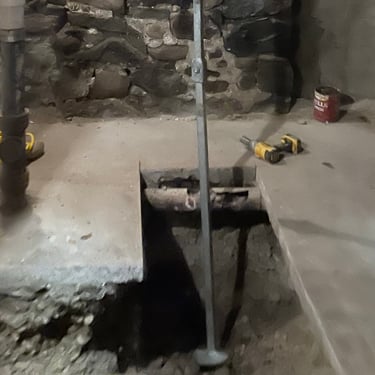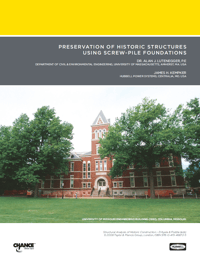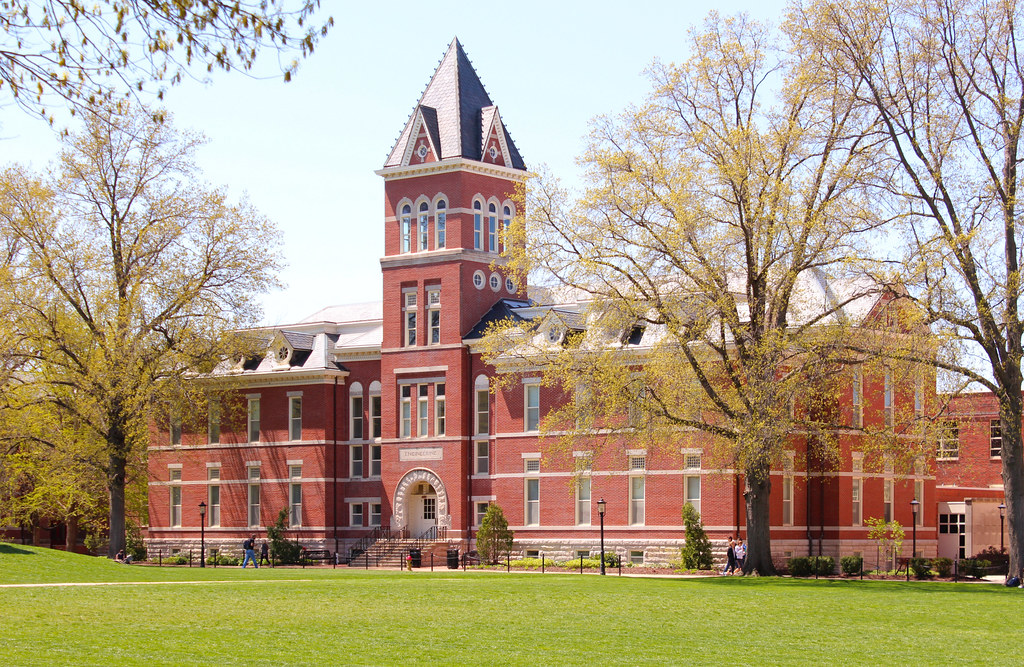From "Preservation of Historic Structures Using Screw-Pile Foundations" by Dr. Alan J. Lutenegger, P.E. and James H. Kempker. ©2017
One of the highest priorities is preserving the historic fabric of the existing structure during construction activities. The use of screw-piles for the structural restoration and underpinning of historic structures has a number of advantages that in most cases cannot be realized by traditional underpinning techniques.
1. MINIMAL DISRUPTION TO EXISTING STRUCTURE
The installation of screw-piles is generally minimally invasive involving slow rotation using a high torque hydraulic torque head. There are no soil cuttings to dispose from installation of the screw-piles. Soil from the excavation to expose the existing foundation may be carefully stockpiled and used as backfill at the completion of the repair work. In some cases, the structure may still be used while the work is in progress.
2. FLEXIBILITY OF GEOMETRY
 As indicated with cases presented, screw-piles are available in a variety of configurations, including single and multi-helix lead sections with a variety of diameters. This allows considerable flexibility for the designer to select an appropriate geometry for a specific project. Increasing the helix diameter and/ or number of helices or modifying the installation length to achieve the required load capacity is generally very easy. In cases where increased bending stiffness is needed to support eccentric loading, the use of the grouted shaft may be desirable. Even when a grouted shaft is used, the additional equipment needed to mix and place the grout is minimal.
As indicated with cases presented, screw-piles are available in a variety of configurations, including single and multi-helix lead sections with a variety of diameters. This allows considerable flexibility for the designer to select an appropriate geometry for a specific project. Increasing the helix diameter and/ or number of helices or modifying the installation length to achieve the required load capacity is generally very easy. In cases where increased bending stiffness is needed to support eccentric loading, the use of the grouted shaft may be desirable. Even when a grouted shaft is used, the additional equipment needed to mix and place the grout is minimal.
3. MINIMAL CONSTRUCTION VIBRATION
There are essentially no vibrations produced by the hydraulic torque motor during installation of the screw-piles. This may be particularly important in situations where the existing structure may be sensitive to construction vibrations.
4. INSTALLATION IN HIGH GROUND WATER
The installation of screw-piles is unaffected by high ground water condition since no excavation is required below the foundation level. If water is above the foundation level, directing may be required, as in most other replacement methods.
5. CONSTRUCTION IN CONFINED SPACE
Screw-piles may be installed in areas of limited access or low head room. The portable equipment can easily be managed by a single operator. Short extension sections may be used inside to install the screw-piles to the required depth. The power unit used to operate the portable torque motor can be placed outside and hydraulic hosed can be routed through a window or small opening in the structure.
6. FIELD VERIFICATION OF CAPACITY FOR QC
 During installation, the hydraulic torque can be monitored to provide a record of the installation torque. This screw-pile attribute allows for field verification of the soil conditions at each pile location and for verification of load capacity. This is particularly important in regard to historic structures where the soil conditions under the structure are often unknown and difficult to determine, especially with interior locations. The installation torque record provides an excellent quality control tool and should be included as a part of every project.
During installation, the hydraulic torque can be monitored to provide a record of the installation torque. This screw-pile attribute allows for field verification of the soil conditions at each pile location and for verification of load capacity. This is particularly important in regard to historic structures where the soil conditions under the structure are often unknown and difficult to determine, especially with interior locations. The installation torque record provides an excellent quality control tool and should be included as a part of every project.
7. RAPID INSTALLATION AND CONSTRUCTION
In most soil conditions, screw-piles may be installed very quickly. A typical installation time using conventional construction equipment such as a skid steer or mini excavator is about 1 hour for a 10 m length of pile. Only a small amount of additional time is needed, when using a grouted shaft screw-pile.
8. INSTANT CAPACITY/LOAD TRANSFER
In most soils screw-piles allow for load transfer to essentially take place as soon as the pile has been installed. This can be important in some cases where emergency repairs are needed before additional damage can occur. In the case of grouted shaft screw-piles, sufficient time, usually 5 to 7 days may be required for the grout to attain sufficient strength before being loaded.
CONCLUSIONS
The primary advantages of screw-piles in historic remediation, which often involves sensitive structures, is the minimal disruption to the historic fabric of the existing structure, the minimal intrusion to the site and surroundings, minimal noise and vibrations that can accompany other more invasive methods and the speed at which the work may be performed.
 Get the entire paper, including methodology and case studies: "Preservation of Historic Structures Using Screw-Pile Foundations"
Get the entire paper, including methodology and case studies: "Preservation of Historic Structures Using Screw-Pile Foundations"

